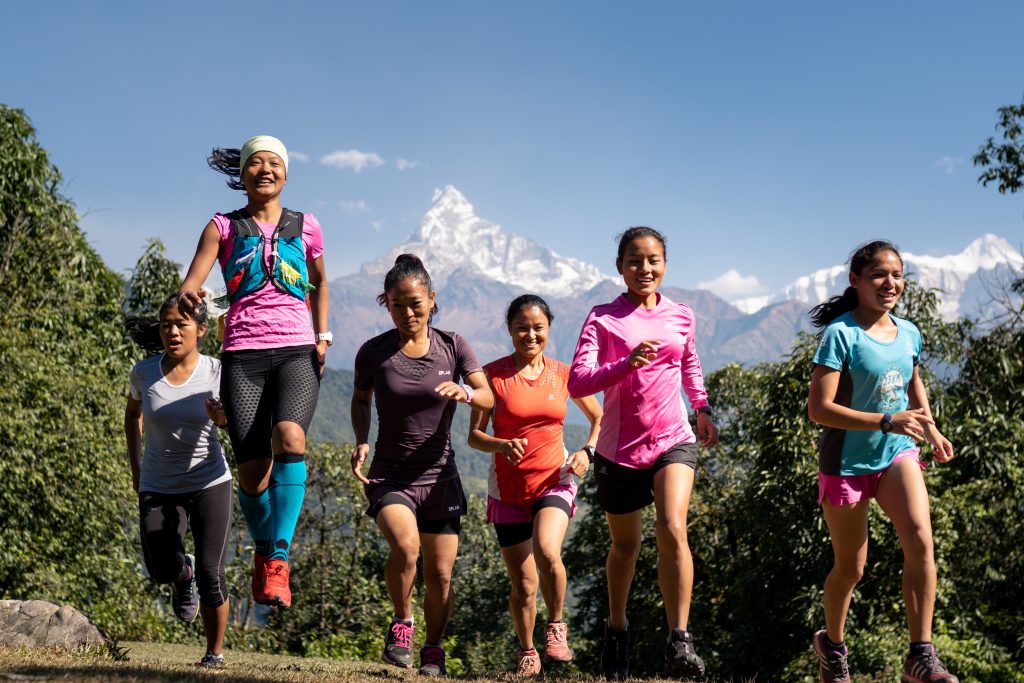The events industry took an enormous hit in 2020 due to the Coronavirus pandemic. Hefty restrictions, social distancing and the suspension of race licences changed the way the industry was permitted to operate. For many organisers, their bread and butter, dreams and passions were under threat as the global crisis was thrust upon the world.
The virus swept the globe casting livelihoods and wellbeing aside. Forced into fight or flight mode, organisers from all over the world, were faced with the same question; how do we survive this?
However, virtual running was able to offer a solution amid the chaos and despair with virtual racing technologies. Race organisers were able to track the progress of participants as if they were taking part in a live race. Runners were able to upload their movements along a route, giving them the opportunity to log their progress and check in via the website to see how fellow runners were fairing. Running alone or with a small (socially distanced) group, in accordance with government guidelines, virtual races became a fantastic solution to keep businesses afloat and runners on the trail. Where ‘in person’ events became prohibited, virtual racing offered up a new lease of life for event organisers and endurance runners.
Adjusting to the new normal in 2020 may have been daunting, change is never easy and in the face of such uncertainty, it was not a straightforward task. However, for some bold organisers who adapted quickly and embraced the change the results proved much more successful than they had imagined.
In their 2020, One Community race event report, Centurion running event organisers, stated that; the switch to virtual running, though highly unanticipated by the organisation, turned out to be the biggest event they had hosted. Anticipating a 1,000 participant turn out, they were pleasantly surprised when 3,985 runners turned up on the ‘start line’. Not only their biggest ever turn out but their furthest reaching event as entrants came in from 40 countries, across all seven continents, making their first virtual race a massive success! (Centurion running committee)
Hugh Brashner, the event director of the London marathon noted that while the 2020 London marathon was “the strangest race, it was also remarkable, as come race day the marathon went global” Participants from ‘China to Costa Rica and Libya to Lathos” logged their miles as they took part in completing the 26.2 miles on a course of their choosing, representing the London Marathon. 43,000 runners made their first ever virtual race a whopping hit! (The Guardian: 2020)
Late in to 2020, there was a collective sigh of relief as we began to see light at the end of the tunnel with the arrival of the coronavirus vaccine. Although short lived, as a new variant of the virus and increasing R number quickly put us back into local lockdowns.
On the 19th December 2020, the government announced plans for tier 4 restrictions, that would continue into 2021. Meaning that race licences within tier 4 regions would once again be suspended, but with the success of virtual racing throughout 2020 it has become clear that race organisers and their athletes will continue to weather the storm!
While we may not be kicking off 2021 in the way that we had hoped, we can rest assured that the world of virtual running is thriving and the future of sport; promising.
Written by Sophie Hunt, Ultrarunner Magazine
References
the Guardian. (2020). “Strangest ever” London Marathon is virtual hit with 43,000 runners. [online] Available at: https://www.theguardian.com/sport/2020/oct/04/strangest-ever-london-marathon-is-a-virtual-hit-with-43000-runners [Accessed 4 Jan. 2021].
onecommunity.centurionrunning.com. (n.d.). Centurion Running. [online] Available at: https://onecommunity.centurionrunning.com/reports/2020/2020-one-community-event-report [Accessed 4 Jan. 2021].
